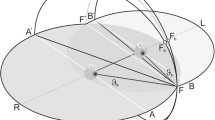Abstract.
This paper describes a deformable model of the human iris which forms part of a system for accurate off-line measurement of binocular three-dimensional eye movements, particularly cyclotorsion (torsion), from video image sequences. At least two existing systems measure torsion from infrared video images by pupil tracking followed by cross correlation using arcs of bandpass-filtered iris texture. Unfortunately, pupil expansion and contraction reduces the accuracy of this method unless drugs are used to constrict the pupil, which causes temporary blurred vision. A five-parameter deformable model of the iris is therefore developed for analysing images obtained without the use of drugs. This model can translate (horizontal and vertical eye motion), rotate (torsion) and scale both uniformly and radially (pupil changes). Torsion measurements obtained with the model are repeatable and accurate to within 0.1°; this performance is illustrated by analysing binocular torsion during fixation on a stationary target.
Similar content being viewed by others
Author information
Authors and Affiliations
Additional information
Received: 27 August 1997 / Accepted: 15 January 1998
Rights and permissions
About this article
Cite this article
Ivins, J., Porrill, J. A deformable model of the human iris for measuring small three-dimensional eye movements. Machine Vision and Applications 11, 42–51 (1998). https://doi.org/10.1007/s001380050089
Issue Date:
DOI: https://doi.org/10.1007/s001380050089




